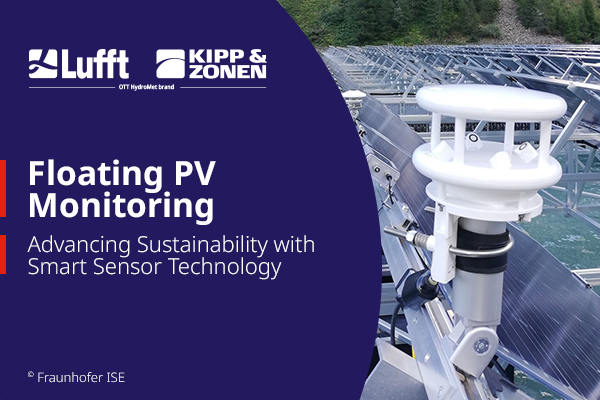The Imperial Valley Solar Company (IVSC) 1 has built the largest photo-voltaic power plant in the Imperial Valley. The WS500-UMB compact weather stations and WS503-UMB Lufft are a part of this project. Reliable sensors are used for monitoring meteorological data for the Imperial Valley Solar 1 plant. Further project information in the blog entry…

Photo-Credit: Simon Kraus – Fotolia.com
Imperial Valley is located in Southern California in America and is adjacent to Arizona and Mexico. The valley is a part of the Colorado Desert and the arid climate is characterized mainly by very hot summers and mild winters. With an average maximum temperature of 31.6 degree Celsius and a minimum of eight hours of sunlight per day, the region is ideal for the production of renewable energy. The guaranteed sunshine and mostly uninhabitable desert-like land are an ideal location for photo-voltaic systems.
The Imperial Valley Solar Company (IVSC) 1 has built the largest photo-voltaic power plant in the Imperial Valley. The 360 million U.S. dollar Imperial Valley Solar 1 plant is one of five planned plants in this region. It is the first to be connected to the public electricity supply of San Diego Gas & Electric energy service. Accurate weather monitoring in real-time and accurate weather forecasts by the Lufft sensors, allow public utility service providers to take advantage of the predicted available energy from renewable sources. Thus, shortages can be avoided by efficient performance management of electricity and other energy resources.
The WS500-UMB compact weather stations and WS503-UMB Lufft are a part of this project. Reliable sensors are used for monitoring meteorological data for the Imperial Valley Solar 1 plant. Environmental data such as solar radiation, air temperature, wind speed and wind direction help to optimize the output power of the massive solar system.
Longtime partner of Lufft and supplier of measurement and communication solutions; Trimark Associates is locally responsible for planning, implementation and monitoring of the Imperial Valley Solar 1 plant. The decision to use Lufft weather sensors for monitoring was taken because of the high quality. Weather sensors such as Lufft are normally used only in the industrial sector and are highly reliable. But the low maintenance requirements also convinced the executives at Trimark Associates.
In recent years, American weather stations have increasingly started using Lufft technology. This is required due to a change of state laws that require monitoring of meteorological data in grid-connected solar systems. The California Independent System Operator (CAISO) requires all grid-connected solar resources in California that generate more than one MW, to have at least one weather station. As a 200 MW power generating solar project, Imperial Valley Solar 1 requires two meteorological stations for monitoring ambient temperature, wind speed, wind direction, humidity, air temperature, solar radiation and surface temperature. CAISO monitors the operation of the statewide power grid with 300 million megawatt hours of electricity per year and the administration of about 80 percent of California’s power flow.
In addition to the durability and resistance of the Lufft sensors, the versatility of the multi-parameter data platform played a major role.
“A unique aspect of the Imperial Valley Solar 1 is that the network of the site was not built for the accommodation of meteorological stations,” explains Robert Hinchman. “Instead of a grave excavation and the installation of a fiber optic cable between the control room and the MET stations, we recommended connecting the devices to the Remote Intelligent Gateway (RIG) via a secure radio frequency. This approach allows us to transfer to CASIO the required data while minimizing the cost of construction at the same time. “
“We are delighted that our all-in-one weather stations were selected for the collection of real-time data for managing operations of a solar system of this magnitude,” says Ann Pattison, CEO of Lufft USA Inc. “The Imperial Valley is one of the greatest testing grounds in the world for feeding solar electricity into the grid and for meeting the basic needs of the energy industry. Lufft plays a very important key role for us. “
In the near future, the Imperial Valley Solar farms will be in full operation, generating more than 1,100 megawatts of renewable energy. Electricity will be delivered to San Diego, using a 188 km transmission line.


